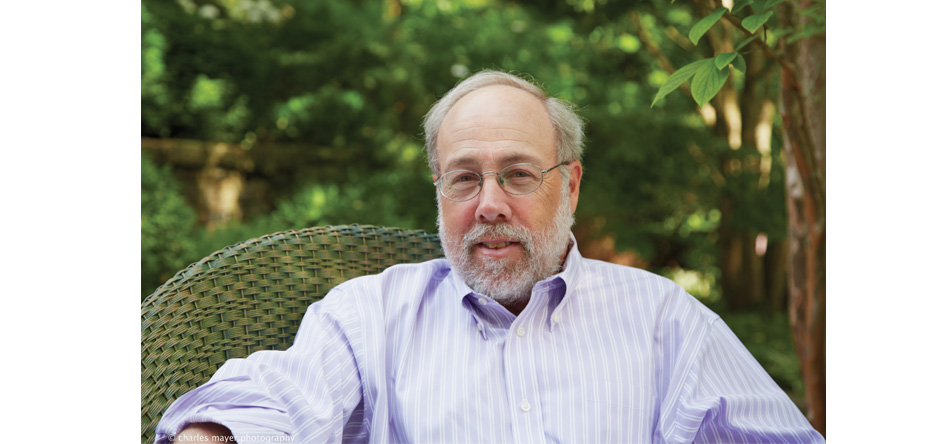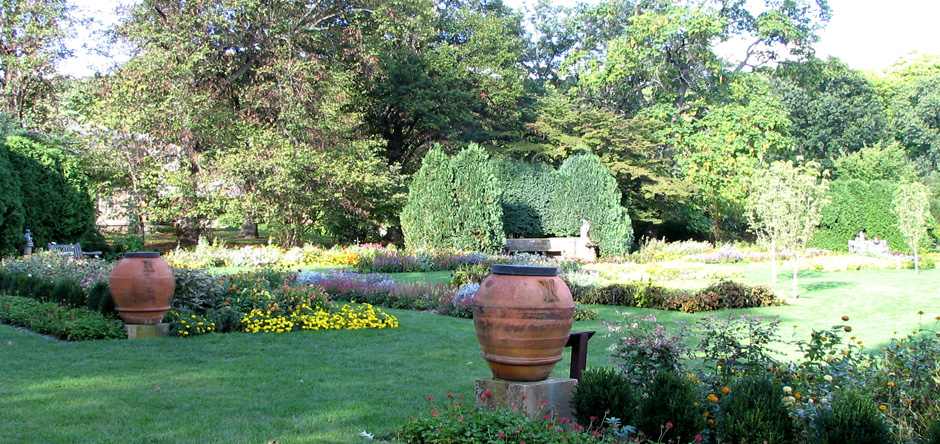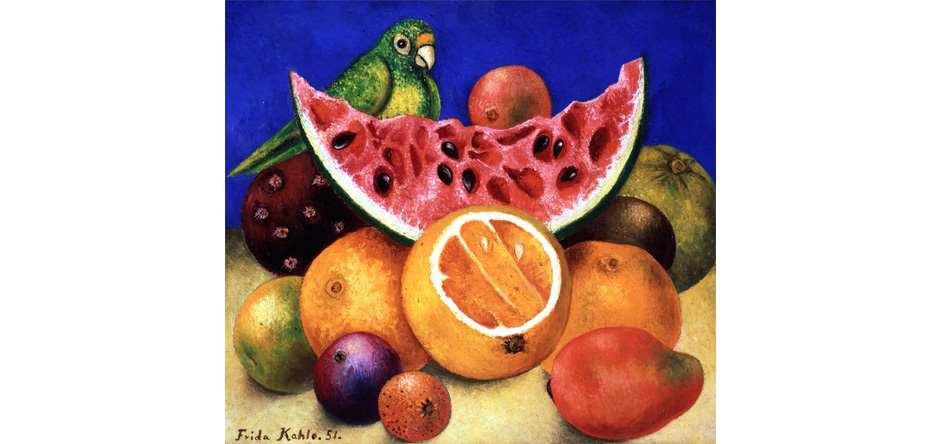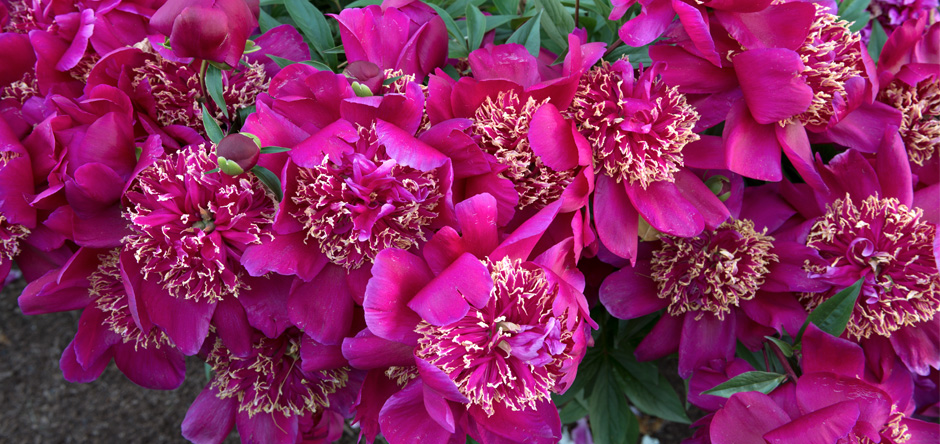All images from “The Good Garden: The Landscape Architecture of Edmund Hollander Design” (The Monacelli Press), with principal photography by Charles Mayer.
Edmund Hollander, the noted landscape architect with a thriving Manhattan-based business, likes to share something very important with his clients, whether he’s working with them on their sprawling farm in North Salem or waterside property in Greenwich.
The welcome to your home begins long before someone reaches your front door.
“We always like to say to people, the entrance to your home, whether you go through a gate or driveway, that’s your entrance.”
Your property and how it’s landscaped sets the tone.
“The landscape is as much a part of their home as the dining room is.”
Hollander, president of Edmund Hollander Design, has three key elements to his philosophy, artfully explored in latest book, “The Good Garden: The Landscape Architecture of Edmund Hollander Design.”
Written by Hollander with Anne Raver and featuring principal photography by Charles Mayer, it’s due out next month from The Monacelli Press.
Landscapes, he explains, are a response to factors that include the site’s natural ecology (the topography, soil and climate); the human ecology, or the ways a client envisions using the property; and finally, the architectural ecology, the physical details of the house and other built elements on the property.
The book is a sequel of sorts to 2012’s “The Private Oasis: The Landscape Architecture and Gardens of Edmund Hollander Design” by Philip Langdon. While that volume focused on the built elements, this latest effort spotlights how plants “breathe life into wood, brick and stone,” as described in the introduction to “The Good Garden.”
It is, he adds during a recent phone conversation with WAG, more focused on these living elements of a project, an “important part of what we do.”
ON THE JOB
Hollander’s firm, with offices also in Sag Harbor, N.Y., includes a team of some 20 landscape architects, environmental planners and horticulturalists whose work is celebrated in “The Good Garden.”
“It’s about the different types of gardens and plantings we’ve used on all sorts of projects and properties,” Hollander adds.
The book features a variety of residential projects grouped by theme, from specialty gardens to Plantings to Complement Architecture.
“It’s really designed to be accessible,” Hollander says. “Not everybody has every element on their property, but they have some of them.”
The lavish coffee-table edition is filled with both photographs and prose designed to offer not only practical advice but also fodder for daydreams, or as Hollander says, to celebrate “just the joy of it.”
The book, some 300 pages, is “the result of 25 years of doing this kind of work in the area,” he says.
But Hollander is far from jaded.
“I learn things on every project that we do.”
And his enthusiasm is clear.
“What’s remarkable is the diversity of areas, from Montauk to Bedford to Bedminster,” he says. “There’s a lot of natural things that need to be understood so the plantings will thrive in that area.”
In this region, he notes, concerns include wetlands, bedrock and clay.
“Then, it’s our little four-legged friends, the deer,” that make a difference. “The deer have really altered the habitat. …You either put up an 8-foot-high fence or you dramatically change what you can and can’t plant.”
Hollander says the best projects are the result of teamwork.
“We also like to work very collaboratively,” he says, from consultations with the builders to conversations with a homeowner about, for example, the importance of soil and maintaining its integrity.
In any job, Hollander says, he is always particularly aware of the areas that immediately surround the house itself.
“There should be a flow from inside to outside,” he notes.
These days, Hollander says he is often working with new owners of existing homes.
“There are actually fewer and fewer ‘empty’ properties in the Westchester area,” he says. “People buy properties now for the landscapes, not the homes.”
The homes, after all, can be dramatically altered but it’s not as easy, he says, to find “a big old property with the land and views” on which to build from scratch.
While each project offers specific challenges and each homeowner has his or her own desires, there are some trends, Hollander says.
“People really want to do less,” he says.
Clients frequently ask for elements that have less need to be maintained, opting, for example, for a meadow instead of a manicured lawn. When the tastes do run toward the traditional lawn, though, he says there is often a growing awareness of maintaining it in a more eco-minded way.
A SOLID FOUNDATION
Hollander, who graduated from Vassar College with a bachelor’s degree in history, went on to The New York Botanical Garden School of Horticulture. He then received a master’s degree in landscape architecture from the University of Pennsylvania. He would work for The Delta Group in Philadelphia and then New York’s Clarke and Rapuano before founding Edmund Hollander Landscape Architects with his partner Maryanne Connelly. The firm has come to be known for the way in which it creates landscapes that are seamlessly integrated with the surrounding man-made elements, whether they be a country farmhouse, a contemporary suburban house or even a city rooftop.
The company has received industry recognition from groups ranging from the American Society of Landscape Architects to the American Institute of Architects to the Royal Institute of British Architects.
Hollander, who describes himself as a “born-and-bred Manhattanite,” still lives in the city.
“We work all over the world but home is here,” he says.
And that familiarity with the region can only benefit clients here.
“We get, obviously, to be more hands-on in Bedford or North Salem than Hong Kong.”
But, he says, at the end of the day, everyone’s goals come together.
After all, we all want our homes to reflect us and also welcome visitors in comfort and style.
With a second home in Sag Harbor and travels that take him throughout the region, Hollander says he’s often got work on his mind and is always checking in on projects he might be near.
“I’m inevitably making detours,” he says, with a laugh.
And whether it’s on the South Fork of Long Island or Scarsdale, his projects, Hollander says, share something in common.
“Everybody’s property is different, but it’s all very important to them.”
For more, visit hollanderdesign.com or monacellipress.com.





